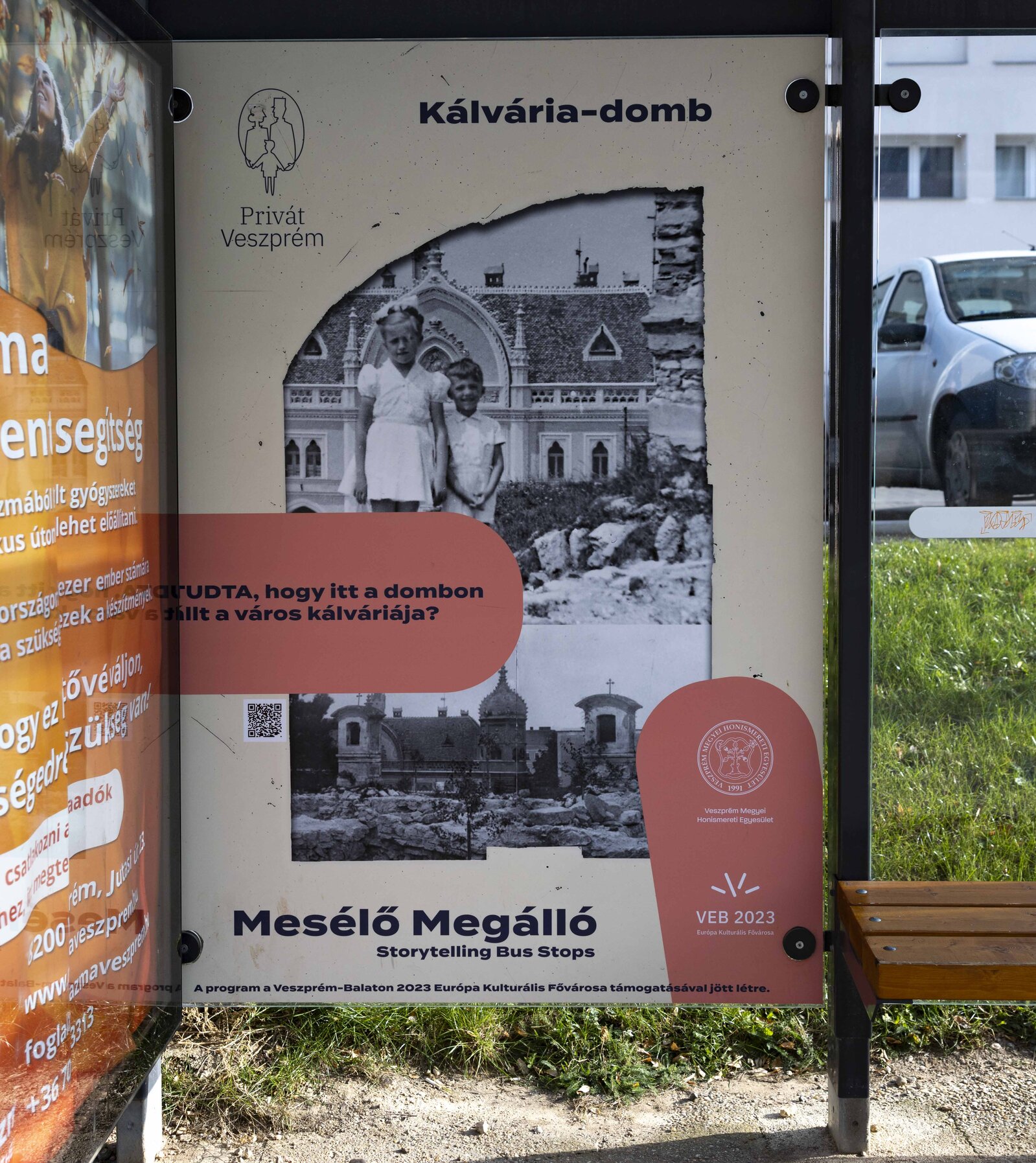Storytelling Bus Stops - Calvary Hill


Between the Inner and Outer Bishop's Gardens stands the almost ten-metre-high Calvary Hill. From the north, the well-layered dolomite rock rises steeply, its southern end gently sloping down to the plateau, the former Outer-Püspökkert. The Devil's Ravine separates it from the Gypsy Hill in the east, and Vámosi (now József Attila) Road borders it in the west. This area was the medieval St. Nicholas' Hill, the centre of one of the oldest parts of the town, settled separately from the castle and its surroundings. Its name derives from the 4th-century bishop of Myra in Asia Minor, who was considered the patron saint of industrialists and merchants, among others. Bishop Róbert of Veszprém (1209-1226) built a church on a prominent ridge, the ecclesiastical centre of the contemporary St Nicholas' Hamlet (district). The parish church of St. Nicholas, 27 metres long, stood crosswise on the hill, facing east-west. The sanctuary faced the museum and the tower faced the present-day outpatient surgery building. The church, which was in continuous use for about 350 years, and the cemetery, which was used for 500 years, were destroyed in 1552, during the first Turkish siege of Veszprém. After the Turkish occupation, the ruined church of St Nicholas was dismantled during the reconstruction period that began at the beginning of the 18th century, but the hilltop retained its sacral character until the first third of the 20th century: the area next to the church and the cemetery was used as a calvary as early as the mid-18th century. Hence the modern name of the promontory. The exact date of its construction is unknown, but it was certainly standing by 1746, as the city council ordered the repair of the bridge under the calvary, which also served as a postal road. The group of statues was carved in 1747 by József Kovács (Schmidt) on commission from Márton Padányi Bíró, who is also credited with the Trinity Coloumn in the castle. Padányi mentions it in his will as the boundary of his purchased hayfield. Preserving medieval traditions, processions departing from the cathedral were held here on significant days. The significance of the calvary particularly increased for the Catholic faithful in Veszprém during Lent, the period leading up to Easter. Many visited in the evenings, especially during Holy Week, to prayerfully walk the symbolic path that Jesus Christ took amid his sufferings. Due to this rare visitation, which was limited to a certain time of year, Calvary Hill received little attention. The local newspaper often noted its neglected condition. Ultimately, in the spring of 1890, Deputy County Steward Dezső Véghely—who had a view of the hill since he lived in County Hall—took decisive action to have it organised. It was at this time that the layout, which is still partially visible today, was completed. On the museum side, there are two serpentine paths. At the same time, the “narrow, unpleasant, and often life-threatening stepped approach on the other side” was eliminated. By autumn, the work was finished. The stations with images were renovated. At the foot of the hill, on the side facing the grove, a “neat wire fence” was erected, and a wide entrance was created in the centre. The serpentine paths were given “decorative railings.” After that, the hill did not receive such care for a long time, as from 1901, the calvary’s permanence here became uncertain, since the area belonged to the city. After the ownership issues were resolved, a plan for a new calvary was conceived in 1921, which would be built in front of St. Ladislaus' Church. Only the statues that remained intact were taken from the old one in the early 1930s. The stations, which had started to deteriorate, remained in place. By 1937, only four of them remained. By 1955, only two were left as a reminder. During this time, the newly landscaped hilltop, equipped with benches, provided a pleasant place for those wishing to rest—just as it does now.

